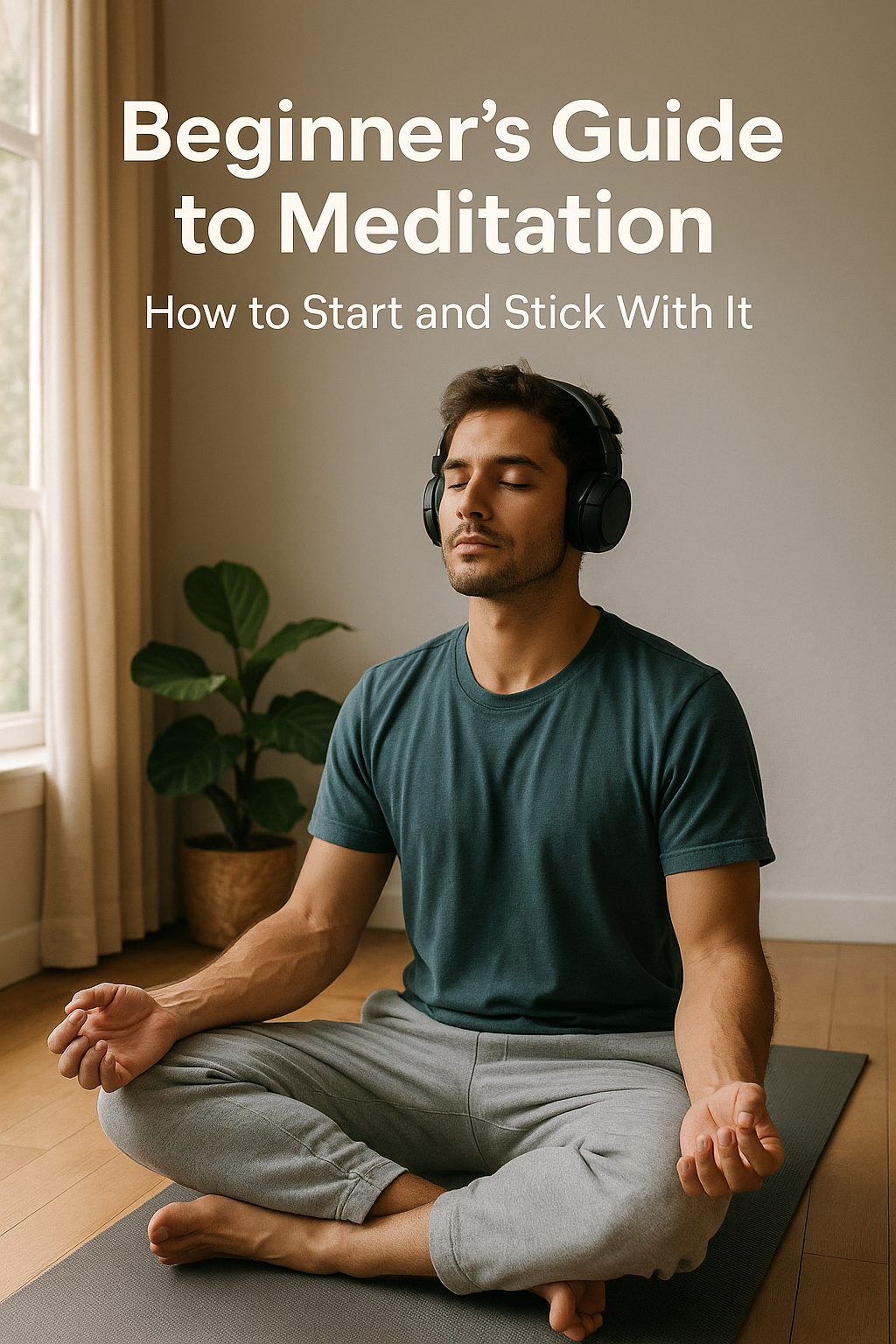Meditation has gone from a niche practice to a mainstream wellness habit—and for good reason. It reduces stress, sharpens focus, supports emotional balance, and promotes overall well-being. But for beginners, meditation can seem confusing or even intimidating. The truth is, starting is much easier than it looks. Here’s a simple guide to help you begin your meditation journey and build a consistent practice that fits into your lifestyle.
1. What Is Meditation, Really?
Meditation is a mental exercise that involves focusing your attention and eliminating distractions. The goal isn’t to “empty your mind” but to become more aware of your thoughts, emotions, and body in the present moment.
There are many types of meditation, but most focus on breath, bodily sensations, or a specific word or phrase (mantra).
2. Benefits of Meditation
Even just a few minutes of daily meditation can lead to noticeable benefits:
- Reduces anxiety and stress
- Improves focus and attention span
- Enhances emotional resilience
- Supports better sleep
- Helps you respond to challenges more calmly
Meditation changes the brain in positive ways, and the effects increase with regular practice.
3. Choose a Comfortable Position
You don’t have to sit cross-legged on the floor. Choose any position where you can relax and stay still for a few minutes:
- Sit on a cushion or chair with your back straight
- Lie down on a yoga mat
- Even standing works for short sessions
The most important thing is to be comfortable but alert.
4. Start Small (2–5 Minutes Is Enough)
Don’t worry about meditating for 30 minutes right away. Start with just 2 to 5 minutes a day. As it becomes a habit, you can increase the time gradually.
You can set a timer or use a meditation app to guide you.
5. Focus on Your Breath
The easiest way to meditate is to focus on your breathing:
- Breathe naturally through your nose
- Notice the air entering and leaving your nostrils
- Feel your belly rise and fall with each breath
If your mind wanders (and it will), gently bring your attention back to your breath. That’s the whole practice.
6. Try a Guided Meditation
If silence feels uncomfortable, start with a guided meditation. These recordings walk you through each step and help keep your mind on track. Many free apps offer meditations for sleep, focus, stress relief, and more:
- Headspace
- Insight Timer
- Calm
- Smiling Mind
You can also find free sessions on YouTube or Spotify.
7. Use Anchors to Build the Habit
To make meditation a daily practice, link it to an existing habit. For example:
- Right after brushing your teeth
- Before checking your phone in the morning
- During lunch breaks
- Before going to bed
Keep your sessions short and consistent to build momentum.
8. Be Kind to Yourself
There’s no “right” way to meditate. Don’t judge yourself if your mind wanders or if some sessions feel boring or difficult. Meditation is about practice, not perfection. Progress comes with patience.
9. Create a Calm Environment
You don’t need a dedicated meditation room, but a peaceful corner helps. Try:
- Dimming the lights
- Using calming scents like lavender or sandalwood
- Playing soft instrumental music or nature sounds
You can meditate anywhere, but a relaxing environment makes it easier to settle in.
10. Track Your Progress
Use a journal or app to track how you feel after each session. Even a quick note like “felt calm afterward” can help reinforce the habit and motivate you to continue.
Small Practice, Big Impact
Meditation isn’t about changing who you are—it’s about becoming more aware of what’s already there. With just a few minutes a day, you can reduce stress, boost focus, and feel more connected to yourself and the present moment.
Start today. Take a deep breath. That’s already the first step.
